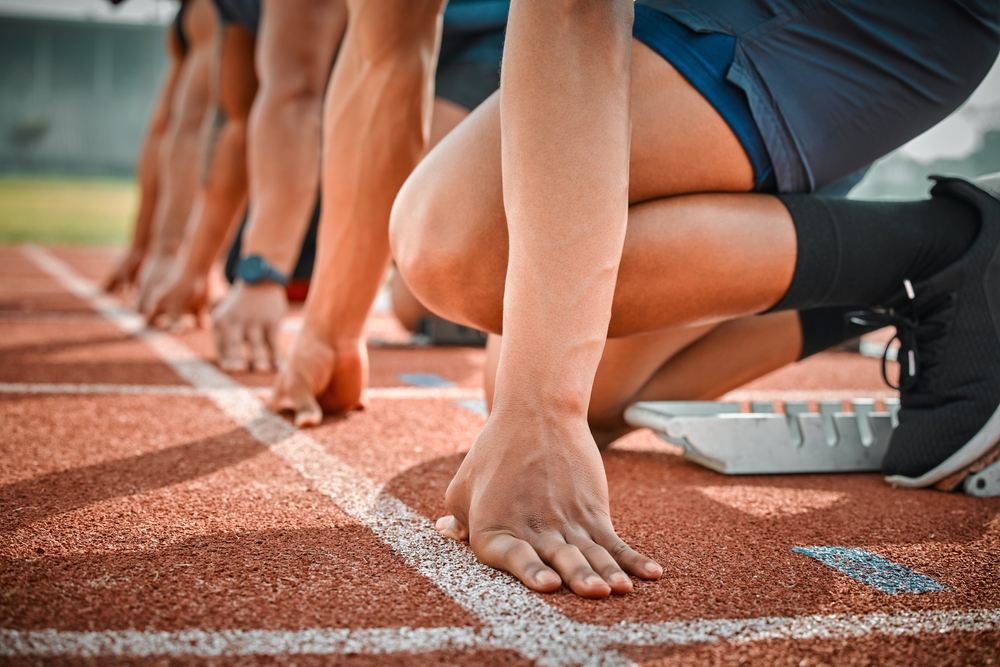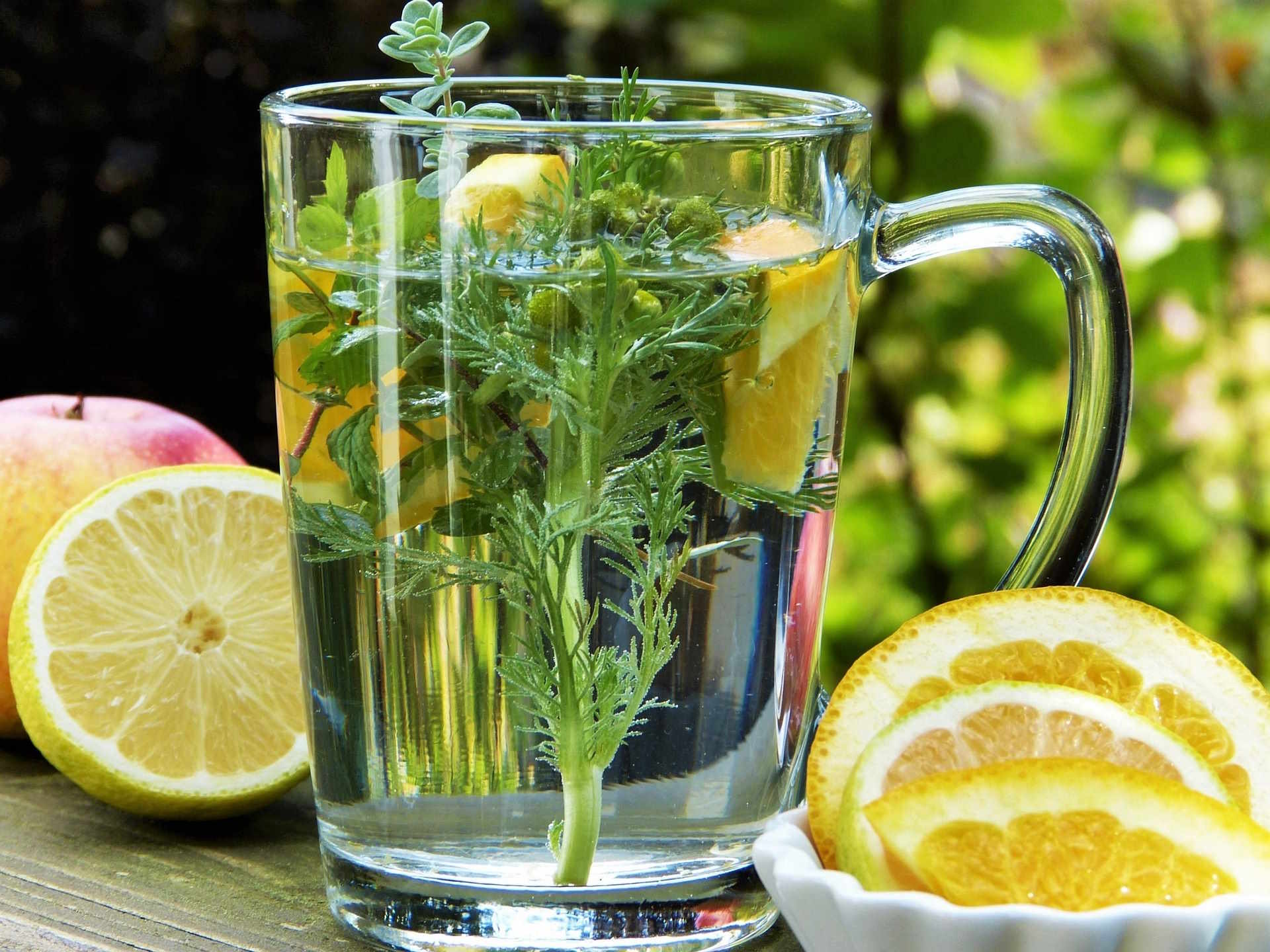Plyometric Adapta para sa Sprint
Isipin ang sprinter na tumatalon mula putik patungo sa sintetikong pista. Sumusubok ng bagong paraan ng plyometric na nag-aangkop sa bawat ibabaw. Sa artikulong ito, tatalakayin natin ang siyensya, praktika at mga pagsubok sa adaptibong plyometrics para sa bilis. Makikita mo ang estratehiya, benepisyo at mga pag-iingat na kailangan para maiangat ang pagganap. Handog pananaw para sa atleta at coach.

Pinagmulan at Kasaysayan ng Plyometric at Pagpapakilala sa Iba’t Ibang Lupa
Plyometrics, bilang isang nakaplanong istratehiya para sa mabilis na lakas at reaksyon, ay may pinagmulan sa mga European na pag-aaral noong kalagitnaan ng ika-20 siglo at pinasikat ng mga researcher tulad nina Yuri Verkhoshansky (shock training) at Vladimir Zatsiorsky (praktikal na aplikasyon). Noong 1960s hanggang 1980s lumago ang pang-unawa sa stretch-shortening cycle (SSC) at ang kakayahan ng kalamnan-tendon complex na mag-imbak at magbigay ng elastic energy. Ang tradisyunal na plyometric ay kadalasang isinasagawa sa matitigas na ibabaw tulad ng pista o kahoy, o sa malambot na ibabaw tulad ng damuhan at buhangin para sa iba’t ibang layunin.
Sa huling dekada, lumitaw ang isang bagong interes: hindi lamang ang intensity ng plyometric kundi pati ang kapaligiran—ang ibabaw na kinikilingan ng atleta. Ito ang pinagmulan ng konsepto ng adaptibong plyometrics o “surface-specific plyometrics”, kung saan planadong binabago ang lupa (surface stiffness, compliance, friction) upang i-manipula ang reaksyon ng kalamnan, mekanika ng takbo, at panganib ng pinsala. Ang ideya ay hindi ganap na bago—mga atleta sa maraming dekada na ang nakararanas ng natural variability (trail running, cross-country, beach sprints)—ngunit ang sistematikong pagbuo ng programa na tumutugon sa surface variability ay mas bagong larangan sa applied sports science.
Historikal na key developments:
-
Pagkilala sa SSC at RFD (rate of force development) bilang pangunahing mekanismo para sa plyometric gains.
-
Pag-aaral ng epekto ng surface stiffness sa ground reaction force (GRF) at muscle activation (mga eksperimento noong 1980s–2000s).
-
Pagtaas ng interes sa practical variability — paggamit ng buhangin, damuhan, artipisyal na turf, foam, at unstable surfaces para sa targeted adaptations.
-
Pag-unlad ng monitoring tools (force plates, inertial sensors, wearable accelerometers) na nagpapahintulot sa coach na sukatin tugon ng atleta sa iba’t ibang lupa.
Ang pag-aaral ng epekto ng surface sa plyometric ay nagpakita na ang mas malambot na ibabaw (hal., buhangin) bumababa ang peak GRF ngunit nagdudulot ng mas mataas na metabolic cost at nangangailangan ng mas mahaba o mas maraming galaw para makamit ang parehong mechanical output. Sa matibay na ibabaw, pumapalo ang peak GRF at mabilis ang SSC pero tumataas din ang risk ng acute impact at overuse kung walang tamang progresyon.
Biomekanika at Pisiyolohiya: Bakit Mahalaga ang Lupa
Ang pag-unawa sa interplay ng surface at kalamnan-tendon unit ay kritikal upang makabuo ng epektibong adaptibong plyometric program. Dalawang pangunahing konsepto: stretch-shortening cycle (SSC) at ground reaction forces (GRF).
Stretch-shortening cycle at rate of force development
-
SSC: isang mabilis na eccentric contraction na agad sinundan ng concentric contraction. Ang pagkakaroon ng tamang timing at neuromuscular coordination ay nagpapataas ng stored elastic energy at nagpapabuti ng power output.
-
RFD: ang bilis ng pagbuo ng lakas, mahalaga sa sprint start at initial acceleration. Plyometrics target ang pagpapabuti ng RFD sa pamamagitan ng mabilis na pagsasanay ng eccentric-to-concentric transitions.
Surface stiffness at impact sa mekanika
-
Matitigas na surface: nagreresulta sa mas mabilis na time-to-peak force at mas mataas na peak GRF, na nakakatulong sa maximal sprint speed at explosive take-offs ngunit nagdudulot ng mas malalakas na impulses sa buto at tendon.
-
Malambot na surface (buhangin, damuhan): bumababa ang peak GRF at nagpapalawig ng contact time. Ito ay nagpapataas ng metabolic demand at humihikayat ng ibang neuromuscular strategies (mas malalakas na hip extension, mas malalim na joint flexion) — kapaki-pakinabang para sa lakas-endergering at injury prevention kapag ginawang bahagi ng periodization.
-
Variable/unstable surfaces (foam pads, wobble boards): nagtaas ng proprioceptive demand at muscle co-contraction, pumapalakas sa stabilizer muscles at neuromuscular control ngunit karaniwang hindi nagpapalaki ng absolute power nang kasing bilis bilang matitigas na surface.
Muscle-tendon adaptation
- Tendon stiffness ay may malaking papel: mas stiffer na tendon mas epektibo sa pagbalik ng elastic energy para sa mabilis na SSC. Ngunit masyadong stiff o masyadong malambot ang tendon ay may trade-offs. Surface-specific training ay maaaring mag-manipula ng tendon behavior: habang ang matitigas na surface ay nagpo-promote ng tendon loading at adaptation ng stiffness, ang malalambot na surface ay nagpo-promote ng muscle hypertrophy at endurance sa local musculature dahil sa mas mataas na muscular work per step.
Neuromuscular coordination at motor learning
- Ang adaptibong plyometric training ay naglalayong hindi lamang palakasin ang mga kalamnan kundi i-recalibrate ang mga motor pattern para sa iba’t ibang kondisyon ng contact. Sa pamamagitan ng sistematikong exposure sa iba’t ibang lupa, tumataas ang adaptability ng motor system — mas mabilis na adjustment sa contact time, joint angles, at force vectoring, na kritikal sa unpredictable race environments at relay exchanges.
Research-backed takeaways
-
Mga eksperimento gamit ang force plates at EMG ay nagpapakita ng pagbabago sa muscle activation patterns at kinematic strategies depende sa surface stiffness.
-
Pag-aaral ng mga sprinters at jumper ay nagpapakita na mixed-surface exposure (kombinasyon ng matigas at malambot) sa periodized program ay nakakabuti sa performance measures tulad ng horizontal jump distance at short-sprint times kumpara sa single-surface training lamang.
Disenyo ng Adaptibong Plyometric Program: Prinsipyo at Periodisasyon
Ang disenyo ng program ay dapat nakaayon sa layunin (acceleration focus vs. max velocity), kasalukuyang antas ng atleta, injury history, at kompetisyon timetable. Narito ang pragmatikong framework:
Assessment at baseline testing
-
Body composition, strength profile (1RM squat o loaded jump metrics), single-leg hop symmetry, tendon health assessment.
-
Sprint testing (10m, 30m), countermovement jump (CMJ), drop jump na may measurables tulad ng reactive strength index (RSI).
-
Evaluasyon ng landing mechanics at ankle/knee/hip control gamit ang video analysis o simple movement screens.
Progression mula sa general patungong specific
-
Preparatory phase: tuon sa general strength at proprioception; gumamit ng malambot at variable surfaces (buhangin, grass) para mapaunlad ang eccentric strength, hip drive, at stabilizer musculature.
-
Specific strength/power phase: dahan-dahang i-incorporate ang matitigas na surface at plyometrics na may mas mataas na intensity (drop jumps mula sa controlled heights, bounding). Dito targetin ang RFD at SSC efficiency.
-
Competition phase: prioritize high-velocity, low-volume plyometrics sa matitigas na surfaces para mapreserba ang power at maiwasan overfatigue. Surface-specific drills na replicate race conditions (e.g., artificial turf for football sprinters, track for track sprinters).
-
Deload/rehab phases: gamitin malambot at unstable surfaces para active recovery at neuromuscular maintenance.
Principles of load management
-
Volume: bilang ng ground contacts per session—research suggests para sa elite jumpers, load na 80–140 contacts per week (iba-iba depende sa intensity) ay common; para sa sprinters, mas kaunting high-intensity contacts (20–60/week) ngunit may supplemental low-intensity variability.
-
Intensity: drop jump height, bounding distance, single-leg vs. double-leg. Higit na mahalaga ang quality ng movement kaysa dami.
-
Frequency: 2–3 plyometric sessions per week sa strength/power phase, 1–2 sessions sa competition phase.
-
Surface periodization: planuhin ang sequence ng surface exposure. Halimbawa: 3–6 linggong microcycle sa malambot na surface para sa eccentric loading, kasunod ng 4–8 linggong transition papunta sa matitigas na surface para i-convert eccentric gains sa explosive RFD.
Mga sample session template
-
Session A (Preparatory, malambot): Warm-up, 4x10m sand sprints (full recovery), 3x6 single-leg bounds (control), squat variations, core stability.
-
Session B (Power, mixed surfaces): Warm-up, 3x4 drop jumps (30–40 cm) on firm surface, 4x20m accelerative sprints, resisted sled pushes on grass, plyo-med ball throws.
-
Session C (Competition taper): Warm-up, 4x10m flying sprints, 2x3 explosive bounds, technique drills on track, mobility and activation.
Individualization at critical points
-
Consider tendon pathology: kung may history ng tendinopathy, limit sudden spikes sa plyometric intensity sa matitigas na surface; mas mainam ang progressive loading at eccentric-targeted exercises sa malambot na surface bago unti-unting ibalik ang matitigas na surface exposure.
-
Age at skill level: kabataan at novice mas uunahin ang motor control sa variable surfaces; elite atleta dapat maingat sa volume at recovery.
Benepisyo, Hamon, at Panganib ng Surface-Adapted Plyometrics
Benepisyo
-
Functional adaptability: Athletes who train on multiple surfaces develop flexible motor strategies, reducing performance drops when conditions change (wet track, grass, sand).
-
Targeted physiological adaptations: Malambot na surface training increases metabolic demand and muscular endurance; matitigas na surface training optimizes SSC and RFD for explosive outputs.
-
Injury prevention: Progressive exposure to surface variability can strengthen stabilizers and improve proprioception, potentially reducing non-contact injuries.
-
Tactical advantage: Sprinters who can maintain efficient mechanics across surfaces are less vulnerable to environmental variability in outdoor competitions.
Hamon at panganib
-
Overuse at impact-related injuries: Mabilis na pagtaas ng high-impact contacts sa matitigas na surface ay nagdudulot ng stress reactions, patellar tendinopathy, at plantar fasciitis.
-
Fatigue and technique breakdown: Training sa malalambot na surface ay nagdudulot ng pagtaas ng metabolic stress, kaya kapag sinamahan ng mataas na volume maaari magresulta sa form degradation at pagtaas ng injury risk.
-
Monitoring complexity: Kinakailangan ng mas advanced monitoring upang makita trade-offs sa workload; hindi sapat ang subjective RPE lamang.
-
Resource constraints: Access sa iba’t ibang surface (buhangin, indoor track, artificial turf, force plates) ay hindi palaging posible sa lahat ng program.
Practical mitigation strategies
-
Implement gradual loading rules (10% weekly increase limit as general guide) at submaximal-to-maximal progression.
-
Prioritize technical quality; gumamit ng video feedback at cues para mapanatili ang mekanika lalo na kapag nag-uumpisa sa bagong surface.
-
Cross-check internal load (RPE, heart rate variability) at external load (jump count, sprint times, peak force) para ma-optimize ang training stress.
Monitoring, Testing, at Teknolohiya sa Support ng Programa
Tama ang sinasabi ng maraming coach: “kung hindi mo sinusukat, hindi mo mapapamahalaan.” Ang adaptibong plyometric program ay nangangailangan ng multi-layered monitoring.
Key metrics
-
Reactive Strength Index (RSI) mula sa drop jumps: indicator ng SSC efficiency at readiness.
-
Countermovement jump height at flight-time to contraction-time ratios: sumusukat ng power at fatigue.
-
Sprint splits (10m, 20m, 30m) at horizontal force-velocity profiling: nagbibigay daan sa pag-evaluate ng conversion ng plyometric gains sa actual sprint performance.
-
Ground contact time at flight time gamit ang contact mats o inertial sensors: nagbibigay ng insight kung paano nag-aadjust ang atleta sa iba’t ibang surfaces.
Practical tools at kanilang aplikasyon
-
Force plates: gold standard para sa GRF profiling; mainam sa research at elite settings.
-
Wearables (IMUs, accelerometers): accessible at nagbibigay ng data sa contact times, step frequency, at body kinematics sa field.
-
High-speed video analysis: para sa technique breakdown at kinematic changes sa iba’t ibang surfaces.
-
Wellness questionnaires at HRV: para sa internal load monitoring at readiness para sa high-intensity plyometrics.
Data-driven decision-making
-
Gumawa ng athlete profile na naglalaman ng baseline metrics at thresholds para sa regressions o progressions. Halimbawa, kung RSI bumaba ng >10% kumpara sa baseline, i-consider ang pagbabawas ng high-impact contacts o pag-shift sa recovery modalities.
-
Use acute:chronic workload ratio (ACWR) bilang isa sa indicators (may limitasyon ang metric na ito, kaya dapat gamitin kasama ang iba pang measures).
-
Integrate subjective feedback: discomfort levels, tendon pain scores, sleep quality — important sa pagpigil ng rehiyon ng problema.
Real-World Aplikasyon: Case Studies at Mga Programang Praktikal
Case Study 1: Collegiate sprinter na may jump deficit
-
Background: 100m sprinter na may mataas na CMJ asymmetry at mababang RSI. Program: 8 linggo ng mixed-surface plyometrics — unang 4 na linggo sa buhangin para sa eccentric overload at single-leg strength, sumunod na 4 linggo ng conversion sa track na may drop jumps at horizontal bounds.
-
Resulta: CMJ height tumaas ng 5–7%, RSI tumaas ng 12%, at 10m sprint improved by 0.06s (conference-level meaningful change). No reported tendon flares dahil sa progresibong loading.
Case Study 2: Football winger na nangangailangan ng change-of-direction at reactive power
-
Background: Mabilis sa max velocity pero mabagal sa short accelerations at cutting. Intervention: 6-linggong block na naglalaman ng sand sprints, unstable surface single-leg hops, at short contact time drop jumps. Emphasis sa proprioception at hip-dominant plyometrics.
-
Resulta: Improved agility test times, reduced contact time sa sport-specific tasks, at subjective isip ng player ng mas confident sa pagbabago ng direksyon sa iba’t ibang pitch conditions.
Practical team application
- Sa team settings, isama ang surface variation sa off-field conditioning sessions: isang linggo sand sprint at sand plyo para sa lower-body resiliency; susunod na linggo concentrated on track drop jumps para sa power conversion. Adjust volume para sa team schedule at competition seasonality.
Rehabilitation at return-to-sport
- Adaptibong plyometrics useful sa rehabbing tendinopathies at ankle sprains sa pamamagitan ng progresyong mula sa low-impact at malambot surfaces tungo sa matitigas at explosive tasks. Example: mid-stage rehab may include single-leg hops sa foam pad progressing sa controlled bounding sa grass, at huling stage sprint-specific bounding sa track.
Programa sa Praktika: Sampol 12-Linggong Plano para Sprint Enhancement
Outline ng macrocycle:
-
Linggo 1–3 (Preparatory): focus sa eccentric control, single-leg strength, malambot na surface plyometrics.
-
Linggo 4–7 (Conversion): pagtaas ng intensity at paglipat sa mixed surfaces, maximum strength sessions.
-
Linggo 8–10 (Specialization): high-intensity plyometrics sa matitigas na surface, sprint specificity.
-
Linggo 11–12 (Taper & Peaking): maintenance plyo, low volume high quality, competition prep.
Halimbawa ng lingguhang microcycle (Conversion phase)
-
Lunes: Strength session (heavy squats), light plyo warm-up, mobility.
-
Martes: Sprint session (resisted sprints + sand accelerations), core.
-
Miyerkules: Active recovery (technical drills, low-intensity sand hops).
-
Huwebes: Plyometric session (drop jumps on track, bounding, IMU monitoring).
-
Biyernes: Strength/power hybrid (Olympic lift derivatives, short sleds).
-
Sabado: Field-specific drills (game-like scenarios), low-volume plyo.
-
Linggo: Rest or active recovery.
Mga detalye sa bawat sesyon dapat i-individualize: bilang ng ground contacts, rest intervals (3–5 min para sa high-intensity plyo), at technique cues (short contact time, forward trunk lean sa acceleration, full hip extension sa bounding).
Pag-iingat, Pagpapagaling, at Pangangalaga ng Tendon
Pag-iingat
-
Smart progression: unahin ang movement quality at gamit ang prehabilitation para sa knee, ankle, at hip stabilizers.
-
Pain vs. soreness: edukahin ang atleta sa pagkakaiba ng muscular DOMS at pathological pain (achilles tendon pain, patellar tendon sharp localized pain) na nangangailangan ng immediate regression.
-
Nutrition at recovery: adequate protein intake, vitamin D status, at sleep ay kritikal para tissue adaptation.
Rehab principles
-
Heavy slow resistance (HSR) at eccentric loading para sa tendon health, kasabay ng mahinahon ngunit consistent na progress sa plyometric intensity.
-
Isometric holds bago explosive loading bilang pain-relief strategy at tendon desensitization.
Return-to-play criteria
-
Objective thresholds: symmetry sa single-leg hop (≥90% ng non-injured limb), RSI within baseline range, sprint times within acceptable margin, at clinician clearance.
-
Progressive reintroduction to surfaces: foam → grass → synthetic turf → track, sa pagitan ng pagpapataas ng intensity.
Hinaharap na Direksyon at Mga Gaps sa Pananaliksik
Bagaman lumalaki ang ebidensiya para sa adaptibong surface training, maraming gaps pa rin:
-
Longitudinal randomized trials na kumpara ang periodized mixed-surface programs vs single-surface programs sa elite sprinters ay limitado.
-
Individual variability: bakit iba-iba ang response ng atleta sa parehong programa? Genetics, tendon properties, at prior exposure ay posibleng dahilan.
-
Optimal dosing: eksaktong volume at intensity para sa iba’t ibang antas ng atleta at iba’t ibang surface ay hindi pa standardized.
-
Interaction ng fatigue, nutrition, at surface-specific adaptations: paano nakakaapekto ang metabolismo sa pag-adapt sa buhangin vs track?
Mga rekomendasyon para sa future research
-
Multicenter trials na gumagamit ng standardized monitoring (force plates, IMUs) para mas precise na data.
-
Mechanistic studies sa tendon remodeling at neuromuscular control na may biopsies at imaging sa long-term adaptations.
-
Applied research sa team sports na tumututok sa practicality at resource constraints.
Praktikal na Mga Rekomendasyon para sa Coach at Atleta
-
Simulan sa assessment: baseline testing at movement screening bago i-introduce ang surface variability.
-
I-periodize ang surfaces: huwag ihalo agad; magplano ng blocks na may malinaw na layunin (eccentric overload vs conversion to power).
-
Prioritize technique: kahit anong surface, kalidad ng jump at landing mechanics ang pinakamahalaga.
-
Monitor both internal and external load: gamitin madaliang tools tulad ng jump count, subjective readiness, at IMU metrics.
-
Maging proactive sa injury prevention: prehab routines, tendon conditioning, at nutrition.
-
Edukasyon: turuan ang atleta kung paano mag-adjust ng mechanics (shorter contact times sa matitigas na surface, mas fluid na hip drive sa buhangin).
Buod at Pangwakas na Pananaw
Ang adaptibong plyometric training na gumagamit ng iba’t ibang surfaces ay nagbibigay ng bagong dimensiyon sa pagpapahusay ng sprint performance. Hindi ito simpleng hype; nakabatay ito sa matibay na prinsipyo ng biomechanics at neuromuscular adaptation. Sa pamamagitan ng maingat na assessment, progresyong naka-periodize, at data-driven monitoring, maaaring makuha ng isang atleta ang benepisyo ng parehong eccentric conditioning at SSC conversion—nang hindi sinasakripisyo ang kalusugan.
Sa praktika, ang pinakamagandang resulta ay nanggagaling sa balanseng programa: ang tamang timpla ng malambot at matitigas na surface exposure, sinamahan ng strength training, recovery, at teknikal na trabaho. Ang paglipat mula sa general patungo sa specific at ang pag-aalaga sa tendon health ay susi upang gawing sustainable ang pag-unlad. Habang patuloy ang pananaliksik, ang coaching community ay dapat magpatuloy sa eksperimento at data collection upang i-fine tune ang dosing para sa iba’t ibang atleta.
Sa huli, ang adaptibong plyometrics ay hindi replacement ng maayos na strength and sprint training—ito ay isang makapangyarihang extension. Kapag ginamit nang may disiplina at katalinuhan, ito ay maaaring maging competitive edge: isang sprinter na hindi lamang mabilis sa magandang araw kundi mabilis sa anumang kondisyon ng ibabaw.




